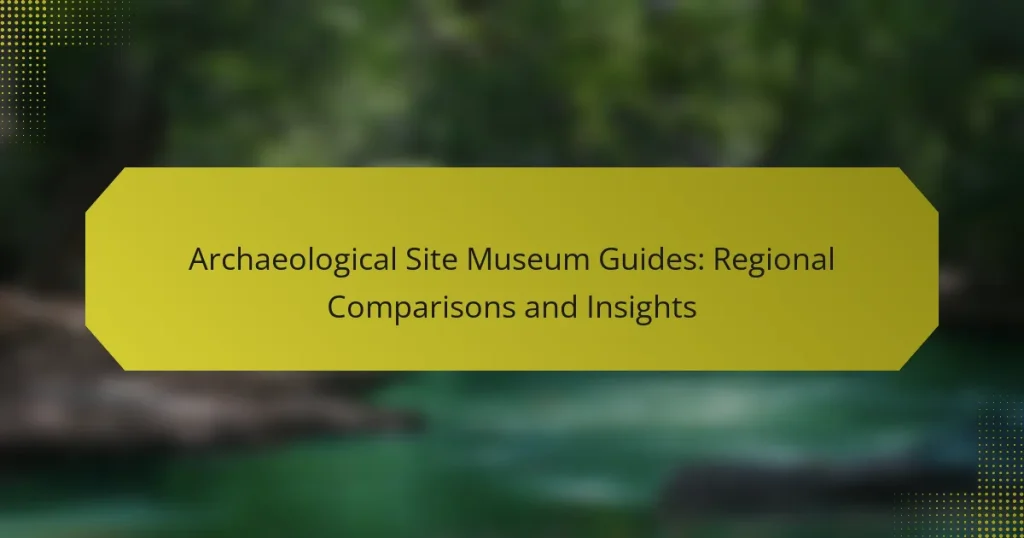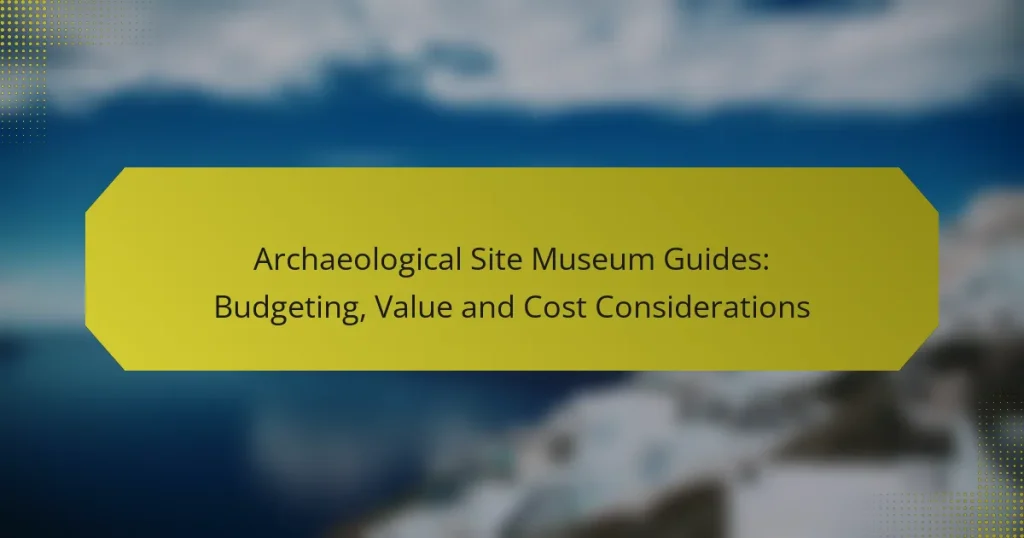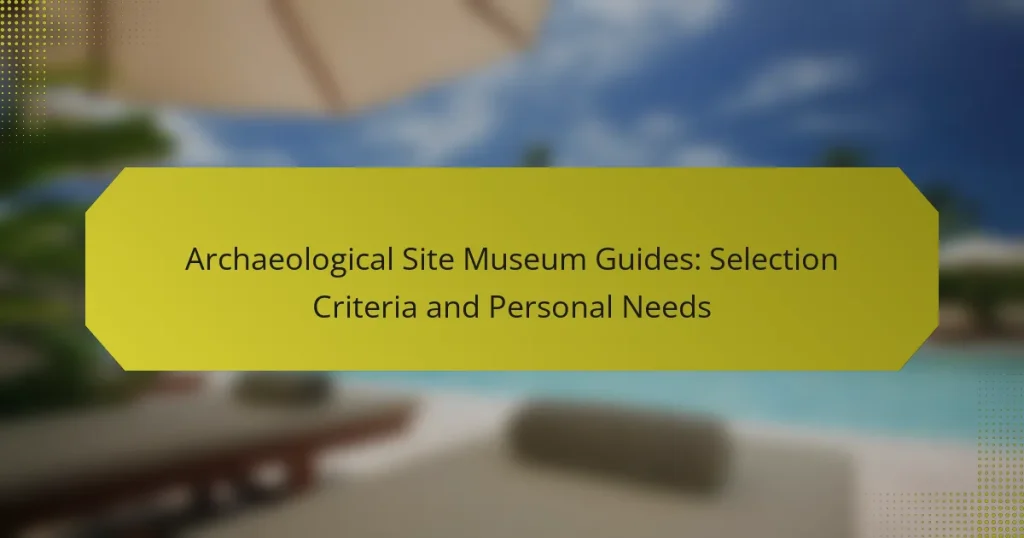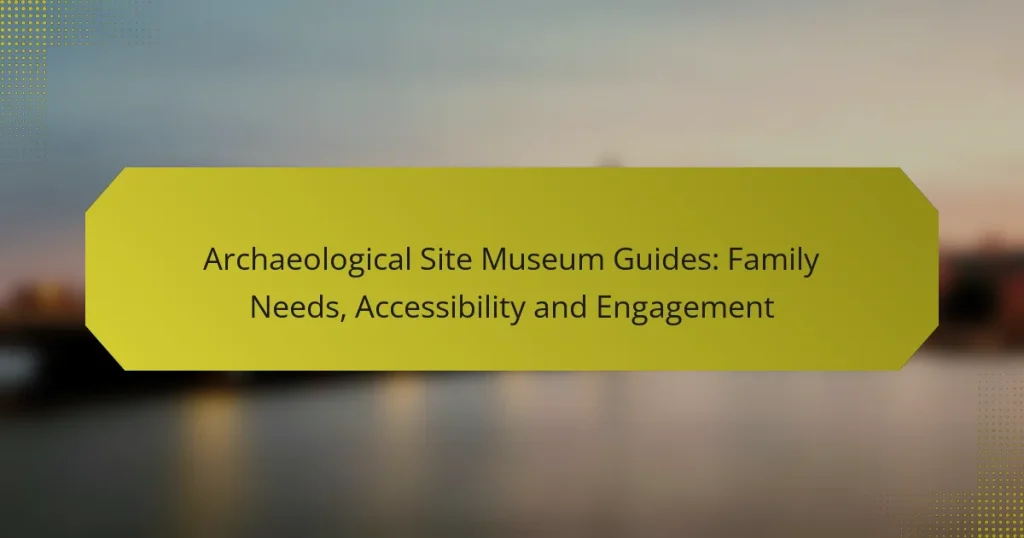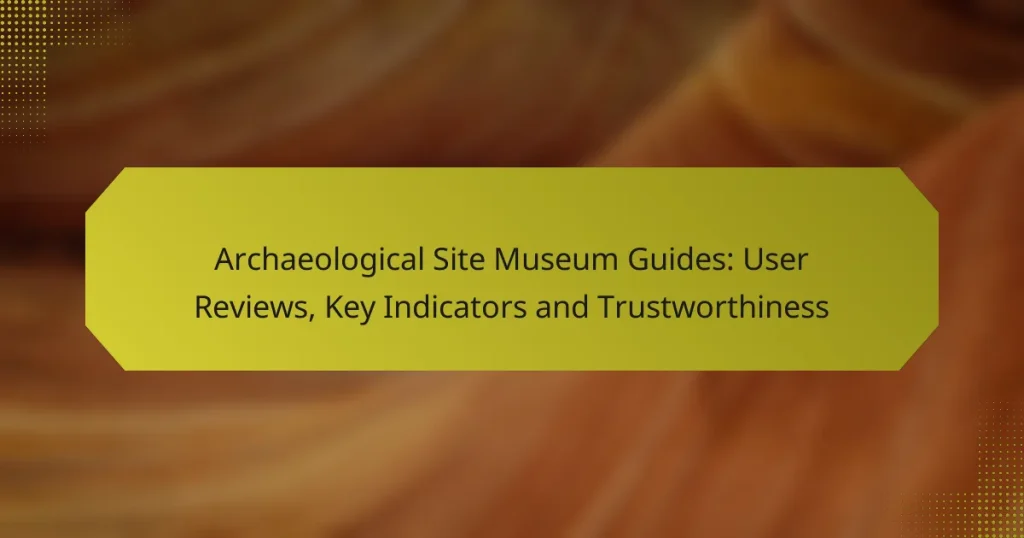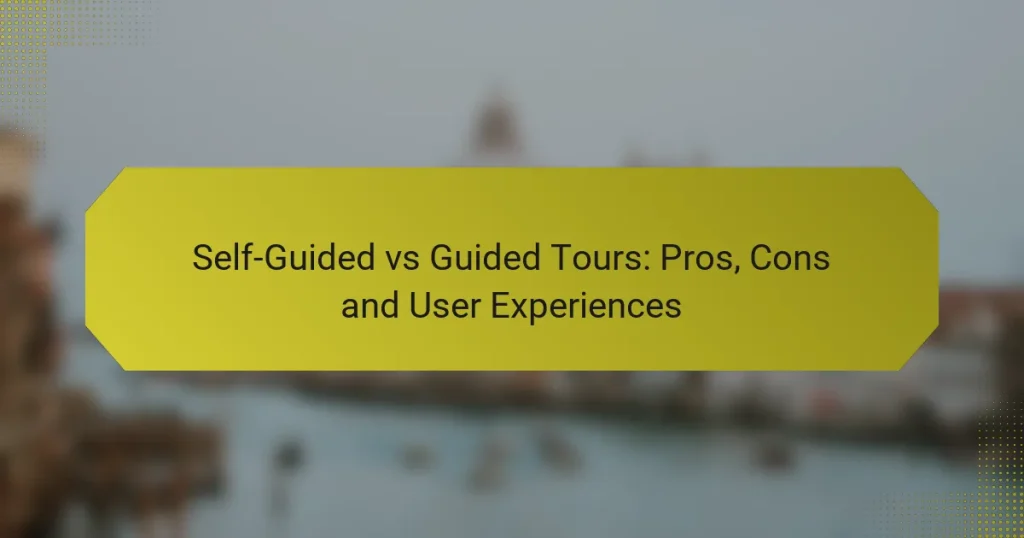Selecting the right archaeological site museum guide is crucial for a rewarding experience. Consider their local expertise, user reviews, and specialized knowledge to ensure you gain valuable insights into the exhibits. A knowledgeable guide can enhance your understanding and appreciation of the site’s rich history and artifacts.
Archaeological Site Museum Guides: Budgeting, Value and Cost Considerations
Archaeological Site Museum Guides: Selection Criteria and Personal Needs
Archaeological Site Museum Guides: Credibility, Sources and Verification
Archaeological Site Museum Guides: Family Needs, Accessibility and Engagement
Archaeological Site Museum Guides: User Reviews, Key Indicators and Trustworthiness
Self-Guided vs Guided Tours: Pros, Cons and User Experiences
How to Choose the Best Archaeological Site Museum Guide
Selecting the right archaeological site museum guide involves considering their local expertise, user reviews, certifications, language options, and specialized knowledge. A well-chosen guide can enhance your understanding and appreciation of the site significantly.
Consider local expertise
Local expertise is crucial when choosing a museum guide, as they possess in-depth knowledge of the region’s history, culture, and archaeological significance. A guide with strong local ties can provide unique insights and stories that enrich your visit.
Look for guides who have lived in the area for several years or have formal education in archaeology or history related to the site. Their familiarity with local customs and traditions can also enhance your experience.
Evaluate user reviews
User reviews are a valuable resource for assessing the quality of a museum guide. Check platforms like TripAdvisor or Google Reviews for feedback from previous visitors to gauge the guide’s effectiveness and engagement level.
Pay attention to comments about the guide’s communication skills, knowledge depth, and ability to answer questions. A guide with consistently positive reviews is likely to provide a better experience.
Check guide certifications
Certifications can indicate a guide’s professionalism and adherence to industry standards. Look for guides who are certified by recognized organizations, which often require training and knowledge of archaeological practices.
In some regions, such as Europe, guides may need specific licenses to operate at archaeological sites. Confirming these credentials can ensure you have a knowledgeable and reliable guide.
Assess language options
Language proficiency is essential for effective communication during your tour. Ensure the guide can speak your preferred language fluently to avoid misunderstandings and enhance your learning experience.
Many guides offer services in multiple languages, so inquire about their language capabilities when booking. This is particularly important in tourist-heavy areas where visitors come from diverse backgrounds.
Look for specialized knowledge
Specialized knowledge can set a guide apart, especially if they focus on specific archaeological periods or themes relevant to the site. A guide with expertise in ancient civilizations, for example, can provide deeper insights into artifacts and historical contexts.
Consider what aspects of the site interest you most and seek a guide who can cater to those interests. This tailored approach can make your visit more engaging and informative.
What are the benefits of hiring a museum guide?
Hiring a museum guide enhances your experience by providing expert knowledge and tailored insights about the exhibits. This can lead to a deeper appreciation of the artifacts and a more engaging visit overall.
Enhanced understanding of exhibits
A museum guide can clarify the context and significance of various exhibits, helping visitors grasp complex historical narratives. They often explain the cultural and archaeological relevance of artifacts, making the experience more enriching.
For example, a guide might share stories behind specific items, such as how they were discovered or their role in ancient societies. This depth of understanding can transform a simple viewing into a captivating journey through history.
Access to exclusive insights
Guides often have insider knowledge that is not available through standard signage or brochures. They may share lesser-known facts, recent discoveries, or ongoing research related to the exhibits.
This exclusive access can enhance your visit, as you learn about the latest archaeological findings or conservation efforts that are not widely publicized. Such insights can spark deeper interest and curiosity about the subject matter.
Personalized tour experience
With a museum guide, you can tailor your tour to focus on specific interests or themes. This personalization allows for a more engaging and relevant experience, as the guide can adjust the content based on your preferences.
For instance, if you are particularly interested in ancient pottery, a knowledgeable guide can spend more time discussing that topic, ensuring your visit aligns with your interests.
Time efficiency
Hiring a guide can significantly improve time management during your visit. They can navigate the museum efficiently, ensuring you see the most important exhibits without wasting time on less relevant areas.
Guides can also help you avoid crowded spots and suggest the best times to visit certain sections, maximizing your overall experience. This is especially beneficial in larger museums where time can easily slip away.
What should you look for in a museum guide?
When selecting a museum guide for an archaeological site, prioritize their expertise, communication abilities, and enthusiasm for the subject. A knowledgeable and engaging guide can significantly enhance your experience by providing context and insights that bring the artifacts and history to life.
Knowledge of archaeological history
A strong understanding of archaeological history is essential for a museum guide. They should be well-versed in the specific site’s background, including key findings, cultural significance, and historical context. Look for guides who can explain not just the “what” but also the “why” behind the exhibits.
Consider asking potential guides about their educational background or experience in archaeology. A guide with formal training or extensive fieldwork will likely offer a richer perspective than one with limited knowledge.
Communication skills
Effective communication is crucial for a museum guide. They should be able to convey complex information in an engaging and accessible manner. Pay attention to their ability to read the audience and adjust their delivery based on the group’s interests and knowledge levels.
During an initial meeting or a sample tour, evaluate how clearly they explain concepts and whether they encourage questions. A good guide should foster an interactive environment, making the experience enjoyable and informative.
Passion for the subject
A passionate guide can make a significant difference in your museum experience. Their enthusiasm for archaeology can inspire curiosity and a deeper appreciation for the artifacts. Look for guides who express genuine excitement about the subject matter and share personal anecdotes or insights.
Ask about their favorite exhibits or discoveries. A guide who has a personal connection to the material is likely to provide a more memorable and engaging tour.
Flexibility in tour structure
Flexibility in tour structure allows a guide to adapt to the needs and interests of the group. A good guide should be willing to modify the itinerary based on time constraints or specific areas of interest expressed by the visitors. This adaptability can enhance the overall experience.
Inquire about the guide’s approach to customizing tours. A guide who can pivot based on group dynamics or unexpected questions will create a more tailored and satisfying experience for everyone involved.
How much does an archaeological site museum guide cost?
The cost of hiring an archaeological site museum guide typically ranges from $50 to $150 per hour, depending on various factors such as location, expertise, and group size. Understanding these costs can help you budget effectively for your visit.
Average hourly rates
Hourly rates for archaeological site museum guides can vary significantly. In the United States, for instance, you might expect to pay between $75 and $125 per hour, while in Europe, rates can range from €50 to €100. In some regions, particularly those with high tourist traffic, prices may be on the higher end of these ranges.
Factors affecting pricing
Several factors influence the pricing of archaeological site museum guides. The guide’s level of expertise, including their educational background and years of experience, can lead to higher rates. Additionally, the complexity of the site and the demand for tours during peak tourist seasons can also affect costs.
Location plays a crucial role as well; guides in major cities or renowned archaeological sites may charge more than those in less popular areas. Specialization in certain themes or periods can also lead to premium pricing.
Group vs. private tour costs
When considering group versus private tours, costs can differ substantially. Private tours generally cost more per person but offer a tailored experience, often ranging from $100 to $200 per hour. In contrast, group tours can be more economical, with prices typically between $30 and $75 per person, depending on the group size and the guide’s expertise.
It’s important to weigh the benefits of personalized attention against the cost savings of group tours. If you’re traveling with a larger party, group tours may provide a more budget-friendly option while still delivering valuable insights into the archaeological site.
What are the top archaeological site museums in the US?
The top archaeological site museums in the US showcase significant artifacts and exhibits that highlight the country’s rich history. These institutions provide insights into various cultures and civilizations through their collections, making them essential destinations for history enthusiasts and tourists alike.
Smithsonian National Museum of Natural History
The Smithsonian National Museum of Natural History, located in Washington, D.C., is renowned for its extensive collection of archaeological artifacts. Visitors can explore exhibits that feature ancient civilizations, including the Egyptian mummies and Native American artifacts, providing a comprehensive overview of human history.
Consider planning your visit during weekdays to avoid larger crowds, especially during peak tourist seasons. Admission is free, but special exhibitions may require a ticket, so check in advance.
Field Museum in Chicago
The Field Museum in Chicago is famous for its vast collection of natural history and anthropology artifacts. Its archaeological exhibits include the ancient Egyptian tomb and the famous Sue, the most complete T. rex skeleton ever discovered, which offers insights into prehistoric life.
To make the most of your visit, allocate at least three to four hours to explore the museum thoroughly. The museum also offers guided tours that can enhance your understanding of the exhibits.
American Museum of Natural History
Located in New York City, the American Museum of Natural History features a wide range of archaeological exhibits, including artifacts from ancient Mesopotamia and the Americas. The museum’s Hall of African Peoples showcases the diversity of cultures and histories across the continent.
Be sure to check for special events or temporary exhibitions that may be taking place during your visit, as these can provide unique experiences. Tickets are available online, and purchasing in advance can save time and ensure entry during busy periods.
